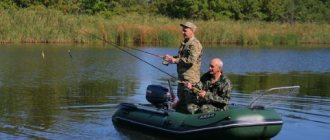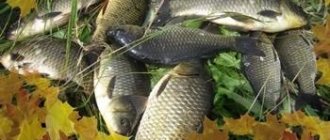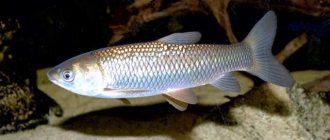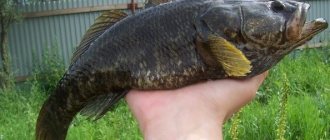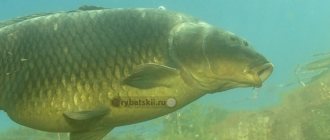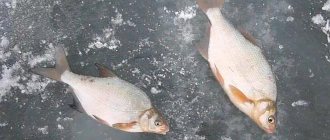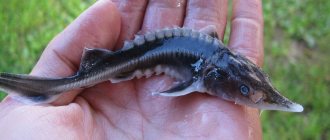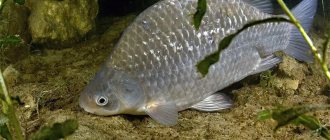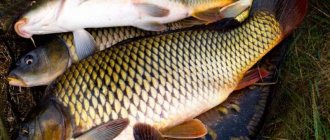Peculiarities of the bearing's behavior
In the Azov and Black Seas in March, pelengas leave their wintering grounds and disperse along the coast at a distance of 50 m. As the water warms up, sexually mature individuals move to the coastal zone and approach spawning grounds: shallow bays, bays and estuaries. In large estuaries, for example in Khadzhibeevsky, pelengas live constantly.
It should be taken into account that during the spawning period there are restrictions on catching pelengas. In any case, before going fishing, you should familiarize yourself with the local legislation on the ban on fishing of aquatic biological resources.
After completion of spawning, pelengas return to their usual habitats and are successfully caught in the seas, estuaries and the Don River until late autumn throughout the day.
Fishing tackle
Usually they fish for pelengas from the shore with donk rods, using long casts.
What to choose?
Experienced fishermen can choose the best gear for catching this mullet on the Don, knowing all the important features of these places. Taking this into account, for the gear we will need:
- simple donka;
- colorless fishing line about 0.35 mm in diameter;
- leashes 30–50 cm long;
- weights up to 100 g;
- hooks sizes 6–10 with a long shank;
- a round float made of foam, no more than 1.5 cm thick, similar in color to algae.
The rod must be strong - the one for carp is quite suitable, allowing you to cast it at a distance of up to 120-150 m. And for more effective fishing, we recommend having several rods that can be cast at different distances, starting from the first sandbank to 120-150 m.
There are usually big fish there. Having discovered it, you need to throw all other gear at a distance of 5–10 m from the biting point, then pulling it up to the mark on the fishing line.
Considering that you will have to cast hard and far, it will be useful to have a so-called shock leader made of thick fishing line, which must be made 3-4 times longer than the blank itself.
It is best to choose a spinning reel. These are usually large reels, at least 5000 series, which allow them to work well with equipment with a large sinker.
Important! Why shouldn't you fish from a boat?
- Pelengas feed in shallow waters, where it is difficult to sail a boat.
- Fish loves places with a swell, and where there are waves, steering the boat is difficult, and you will be carried towards the shore.
- The fish likes to be on the surface of the water, jumping out and playing, so you should not make it see you.
Cork as an accessory
In its simplest form, this tackle is a bottle cap with a weight to which leashes with hooks are attached. The tackle is filled with bait, the hooks are inserted and the fishing rod is cast.
The principle of operation is simple: the fish, along with its food, is sucked in by the built-in hooks, all that remains is to fish it ashore. Casting range with such heavy equipment is guaranteed.
The fish is hooked well with a good jerk or, conversely, when the line is released, it makes itself known. Therefore, you definitely won’t be able to sleep through the bite.
It should also be noted that such gear can be used both close and far from the shore.
Cork is the choice of those who go fishing for the result, and not just to enjoy the process.
This fish is unique, and the meat has excellent taste. Moreover, its rapid resistance - to go onto land - will not let you get bored while fishing. Experienced fishermen say that without the right bait you won’t see a catch, since the pelengas are very picky about food.
Previously, these mullets rarely entered the fresh water of rivers flowing into the seas. Now you can successfully catch this fish on the Don River, using both specially made tackle and a simple fishing rod with a float.
A fish that is quite similar to the Far Eastern mullet, which lives in the seas and fresh water bodies, is pelengas (pilengas, pelingas, belingas). It belongs to the mullet family, its locations are the areas of the Sea of Japan, as well as the Black and Azov Seas, and numerous fresh water bodies located in Europe and Russia.
The fish is very powerful, fishing lovers do not refuse to catch this amazing beauty once again. There are many ways to take possession of such a trophy, one of them is catching pelengas on the Don. Fishing is first a state of mind of a person, and then a sporting passion.
Convenient time for fishing
It is known that catching pelengas with standard baits is almost impossible. The pelengas have no teeth, so there is no point in trying to catch it with shrimp or using hard bait.
Pelengas mainly feed on various microorganisms and invertebrates. However, its most favorite food and running bait is the marine polychaete worm Nereis (from the Greek “Nereid” - the daughter of the god of the water element Nereus). This worm (Nereis) is easy to buy or catch yourself. Although it is quite expensive, Nereis is a hot commodity in the markets of seaside villages and towns.
How to catch more fish? I have been active fishing for quite some time and have found many ways to improve the bite. And here are the most effective ones: Bite activator.
Attracts fish to cold, warm water with the help of pheromones included in the composition and stimulates its appetite. It’s a pity that Rosprirodnadzor wants to ban its sale.
More sensitive gear. Reviews and instructions for other types of gear can be found on the pages of my website.
Lures using pheromones. You can get the rest of the secrets of successful fishing for free by reading my other materials on the site.
This worm is obtained from the silt of estuaries and the bottom of rivers flowing into the sea:
- you need to get into the water (if it’s cool, then in a special suit);
- scoop up sludge from the bottom with a shovel;
- throw lumps of silt ashore;
- crush the silt on the shore;
- and carefully remove the Nereis.
This work cannot be called pleasant:
- this is a fuss, in rotting stinking sludge
- and you need to know the places where it is easier to get large specimens rather than small fry.
It’s quite easy to spot a flock of beargas! These fish often jump high out of the pond. Thus, if the fish does not jump, then most likely you should not try to fish.
Since it is not easy for the bearer to detect bait lying on the bottom, you need to make the hooks with bait float above the bottom and the algae.
A flock of pelengas in nature, swimming above the algae, picks up what the wave lifts from the bottom.
This is where the bearer should notice the appetizing Nereis on leashes.
To catch pelengas, you will need a powerful rod with a length of at least 3.5–4.5 meters, since long casts will be required. The Pelengas fish is very cautious and timid and does not allow humans to get close to it, so the further you cast, the better. The rod test should be in the range of 100 to 200 grams.
The reel should be used large and powerful, having dimensions from 5000 to 7000 and a low gear ratio. The spool of such a reel should fit at least 300 meters of monofilament fishing line with a diameter of approximately 0.35–0.45 mm.
Considering that the casts are expected to be forceful and long-distance, it is necessary to use a so-called shock leader made of fishing line with a diameter of 0.5–0.6 mm, having a length of at least three times the length of the rod. If fishing is not supposed to be done by hand, then the gear for catching pelengas should be installed on a stand that can hold the rod with a significant angle of 70–80 degrees.
How to make a press for technoplankton with your own hands? Our article will tell you and show you about this. In this article you will learn how to catch sturgeon using bottom tackle.
After the rod, reel and line are prepared, you should study the question of how exactly this fish is caught in the chosen place. The equipment used for catching pelengas in both the Black and Azov Seas is the same, developed over years of experimentation. You can always purchase it at local markets, stores, or make it yourself.
The equipment is a piece of fishing line 0.3–0.4 mm long, approximately 1.5 meters, at the end of which a weight weighing 70–150 grams is tied. On the other hand, a carabiner is attached to the fishing line for attachment to the shock leader.
The choice of cargo is determined by the weather and the required casting distance. Loads in the form of a rocket have performed well; the thick part rests on the bottom, and the narrower part, to which the fishing line is tied, is located at a distance from the bottom. Such loads have good aerodynamics, fly far and easily come off the bottom in the future.
Two leashes made of fishing line of the same diameter and 10-15 cm long are tied to the line of our equipment at a distance of 60–80 cm from each other, hooks No. 6–9 with a long shank are used, onto which cylinders or cones made of foam are put on, which ensures the buoyancy of the bait in the water column. The foam is painted red or green.
Long-standing debates about choosing the right color have not subsided to this day, so it is better to trust the experience of anglers in a particular place.
For example,
catching pelengas in Kirillovka
, on the Sea of Azov, suggests the red color of the foam, and on the Black Sea they may give preference to a different color, in particular green.
The most often used bait is the sea worm - Nereis, which lives in the ground in shallow silted areas of the sea or estuary. It is very difficult to get it; its habitats are usually kept secret by local fishermen, but you can almost always find Nereis in markets.
Black Sea pelengas and mullet love to feast on the Inkito worm, which is obtained from the lake of the same name in Abkhazia. During zhora, pelengas do not disdain earthworms, you just need to choose them of medium size and dark color.
Are you interested in catching silver carp using technoplankton? Read more about this in our article. There is a lot of useful information about catching bream using the famous corn.
This fish can be caught equally successfully from the shore and from a boat. Fishing from the shore is characterized by long casts, so you will need a long (3.5 m or more) rod with a weight of 100 to 200 grams. Carp tackle is excellent. Pelengas fish are powerful and strong, so you will need the same powerful reel, size 5000, on the spool of which you should wind at least 300 m of fishing line, 0.35-0.45 mm thick.
In this case, it is advisable to choose a monofilament fishing line, since algae strongly cling to the braid. You will have to cast the tackle at a distance of at least 100m.
It all depends on the location of the shallows where the fish feed. For greater reliability of the equipment, it is better to use a shock leader.
To do this, take a fishing line with a diameter of 0.5-0.6 mm and a length three times the length of the rod. When installing the rod on the shore, stands are used that allow the rod to be installed at an angle of 70-80 degrees.
The equipment used is the same, regardless of where pelengas are caught - in the Black or Azov Sea. As a rule, this is a piece of fishing line, about 1.5 m long and 0.3-0.4 mm thick. At the end of this segment, a load ranging from 70 to 150g is attached. Its weight depends on fishing conditions, such as casting distance, presence of waves, wind, etc.
The best weight is the one shaped like a rocket. This is due to its excellent aerodynamic characteristics.
In addition, the load comes off the bottom perfectly. On another piece of fishing line, a carabiner is tied, through which the fishing line is attached to the shock leader.
On the same piece of fishing line, three leashes are knitted, each 15 cm long, at a distance of 50 cm from one another. The length of this piece of fishing line can reach 2.5 m.
It all depends on the nature of the bottom in the fishing area, or more precisely, on the level of algae.
The leashes are attached using the “loop to loop” principle. At the ends of the leashes, hooks No. 6...9 are crocheted, according to the domestic classification.
Hooks are selected with a long shank. This is necessary so that a foam ball can be placed on the hook, which can give the hook and bait positive buoyancy.
Thus, the hooks with baits rise above the algae. This is one of the main conditions for successful catching of bearings.
It is advisable to paint polystyrene foam balls (or cylinders, squares) red or green. As practice shows, bearings react quite actively to balls of a red or orange hue.
At the same time, the equipment is slightly modified, namely the hook. This will reduce the number of fish hatches and optimize the use of the Nereis worm as an expensive bait.
For this purpose, a piece of wire is added to the hook and another notch is soldered. As a result, the worm is held much more securely on the hook, and the foam ball is located outside the shank.
In other words, rework saves space on the hook.
Bottom fishing requires a powerful long-range fishing rod. It should easily deliver heavy equipment at a distance of 120-150 m. This is where you can count on catching a trophy.
- Powerful carp or surf rods are perfect for equipping a donkey. Its length must be more than 3.5 m, and the test range is between 100-200 g.
Photo 2. Powerful feeder. - A spinning reel with a 4000-5000 spool will help you catch strong fish. Some anglers prefer reliable inertial models.
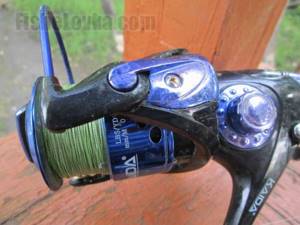
Photo 3. Large-capacity reel. - The supply of fishing line on the reel should be more than 200 m. Preference should be given to monofilament thread with a diameter of 0.35-0.45 mm.
Recommendation! It is better not to use wicker, because a lot of algae sticks to it.
- The equipment is made from a piece of monofilament with a diameter of 0.30-0.40 mm and a length of 1.5 m. A swivel is tied at one end to connect to the main fishing line. A rocket-shaped sinker is mounted at the other end. At a distance of 40-50 cm from each other, fluorocarbon leashes 12-15 cm long are tied to the equipment.
- Hooks No. 6-9 should have a long shank. A foam ball clings to it. Black Sea fishermen are modifying the standard hook for the Nereis worm. First, a wire spike is soldered to the forend. And the hook itself is attached to a twisted rigid wire. This design prevents the active worm from sliding off the hook.
The main bait for catching pelengas in the Black and Azov Seas remains the polychaete worm Nereis. It is a natural food for fish, so the pelengas bite on it confidently and greedily. Bites on an ordinary earthworm or maggot are possible only during the feeding season.
Pelingas is an unusual fish that requires an individual approach. It is best to learn about the preferences of this mullet from local fishermen. Then a powerful bite will not keep you waiting long.
Most of all, this fish loves to eat a furry sea worm called Nereis. When choosing bait, you should take this fact into account and stock up on the necessary bait in advance. There is a worm in the mud near the shore. It does not stay on the hook well and will have to be replaced frequently. Nowadays you can buy silicone Nereis, no worse than the real thing.
Various crustaceans are used as bait, they are planted one at a time and changed after each new cast. This fish has no teeth, including pharyngeal teeth. For this reason, catching pelengas on the Don with shrimp will be ineffective. He cannot cut through chitin. Exceptional cases have been observed when fish pecked at a bunch of maggots and earthworms.
There were attempts to get a good catch using the bait as a bloodworm and crawls, but for unknown reasons this did not lead to anything. The reason is probably the habit, without deviating from tradition, of eating what the consciousness has developed over many years.
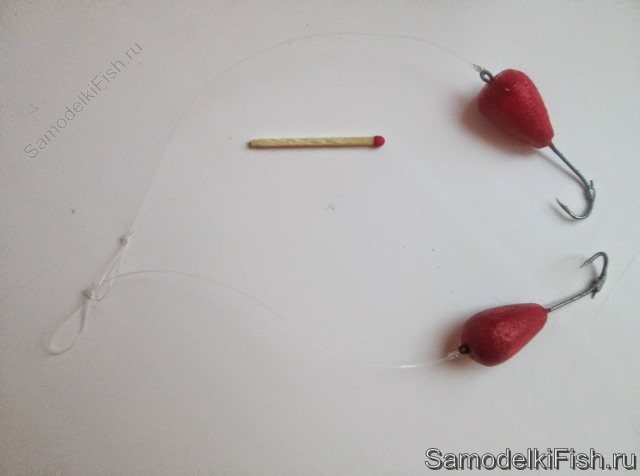
Fishing for pelengas in Rostov-on-Don, as well as in other places, is that you can catch it both with a float rod and with bottom tackle. You just have to change the weights up or down.
Where to look for pelengas
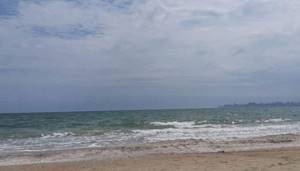
When purposefully catching pelengas, it is important to correctly determine the place where it is caught. It’s easier to do this on a familiar river. It is enough to find a “habitable” place. On the seas, estuaries and an unfamiliar river, the task becomes more complicated.
When choosing a promising area for fishing for pelengas, you should pay attention to deserted places, away from noisy operating enterprises. Especially if the noise is periodic. Pelengas is a cautious fish, and when extraneous sounds occur, it stops pecking.
Schools of sawfish can be seen visually by the seething pit. This usually happens during a calm period after a storm. This is the best sign of the presence of fish. Seagulls circling over one area is also a good sign. But seagulls can also circle over schools of small fish of other species.
A good sign of a fishing spot is a gently sloping sandy shore, a slope with a slight slope (shallow water) for tens of meters, a deepening, and then a decrease in depth.
Where to catch pelengas
The Arbat Strelka is the best place for catching pelengas on the Sea of Azov. You need to choose more deserted places, where there are sandbanks far from the coast, at a distance of about 40 to 120 m. Ideal fishing spots are considered to be small bays where flocks of pelengas come, which are very difficult not to notice, in this place the sea is literally boiling, it is in this place that you need to throw the tackle.
To find a pelengas, you need to move around a lot in search of fish. During the winter period, the fish are constantly migrating, or accumulate in holes, and it is almost impossible to put them on point, unlike other fish. You can try to set a fishing point in the summer, when the school of pelengas breaks up into small flocks. If you fish from a pier or from a boat vertically with float gear, then some fishermen sometimes use well-crushed sprat with bread and sand as bait.
Recently, pelengas are increasingly entering the fresh waters of rivers that flow into the sea. You can successfully catch pelengas on the Don using both bottom tackle and a float rod. Installation of the tackle is no different from the tackle for sea fishing; the weight of the sinker can only change downward. The same Liman worm Nereis is used as bait, but there have been cases when it pecked at a bunch of maggots or an earthworm, but this is more the exception than the rule.
Bearing gear
Fishing for pelengas is carried out with bottom gear:
- Donka with a long-range rod;
- Classic feeder;
- Float gear equipped for fishing from the bottom.
Donka on the bearing. A rod is selected that allows you to cast over a distance of 100 meters or more. The best option is a super-heavy class feeder rod with a test weight of more than 100 grams. Length – 4.5-4.8 m.
A powerful coil is installed. The volume of the spool should ensure that the fishing line of the required length is laid. The reel is used when fishing for fiercely resisting bearings, so it must be of high quality. It is better to use reel models equipped with a baitrunner.
What to choose?
Experienced fishermen can choose the best gear for catching this mullet on the Don, knowing all the important features of these places. Taking this into account, for the gear we will need:
- simple donka;
- colorless fishing line about 0.35 mm in diameter;
- leashes 30–50 cm long;
- weights up to 100 g;
- hooks sizes 6–10 with a long shank;
- a round float made of foam, no more than 1.5 cm thick, similar in color to algae.
The rod must be strong - the one for carp is quite suitable, allowing you to cast it at a distance of up to 120-150 m. And for more effective fishing, we recommend having several rods that can be cast at different distances, starting from the first sandbank to 120-150 m.
There are usually big fish there. Having discovered it, you need to throw all other gear at a distance of 5–10 m from the biting point, then pulling it up to the mark on the fishing line.
Considering that you will have to cast hard and far, it will be useful to have a so-called shock leader made of thick fishing line, which must be made 3-4 times longer than the blank itself.
It is best to choose a spinning reel. These are usually large reels, at least 5000 series, which allow them to work well with equipment with a large sinker.
- Pelengas feed in shallow waters, where it is difficult to sail a boat.
- Fish loves places with a swell, and where there are waves, steering the boat is difficult, and you will be carried towards the shore.
- The fish likes to be on the surface of the water, jumping out and playing, so you should not make it see you.
This is interesting: The procedure for alerting signals in the event of a dangerous situation
What does the pelengas bite on?
There is no need to guess what the pelengas are biting on on the day of fishing. The main bait is Nereis. This worm is also called the estuary or sea worm. You can experiment with its silicone analogues, shrimp, regular worms, maggots, pieces of fish, mussels or bloodworms. It happens that experiments end in bites. But, practice shows that when fishing in the Azov and Black Seas, in estuaries and the Don River, the best bait for pelengas is nereis.
The situation is different in the Far East. Due to the lack of Nereis, catching the Far Eastern mullet is quite difficult. Cotton wool, etc. are used as bait.
Interesting fact! In the Far East, the homeland of the pelengas, only a few enthusiastic fishermen engage in targeted fishing for it with amateur gear. Typically caught as bycatch in this region.
Fishing for pelengas on the Don: tackle, places, bait
A fish that is quite similar to the Far Eastern mullet, which lives in the seas and fresh water bodies, is pelengas (pilengas, pelingas, belingas). It belongs to the mullet family, its locations are the areas of the Sea of Japan, as well as the Black and Azov Seas, and numerous fresh water bodies located in Europe and Russia.
The fish is very powerful, fishing lovers do not refuse to catch this amazing beauty once again. There are many ways to take possession of such a trophy, one of them is catching pelengas on the Don. Fishing is first a state of mind of a person, and then a sporting passion.
Nereis storage
Nereis, removed from its habitat, loses its attractiveness to fish within a day. It is useful to know how to organize the storage of nereis caught in reserve or left over from fishing.
You need to take a container of suitable size with a lid, place Nereis in it and fill it with vodka. “Drunk” Nereis can be stored in the freezer for a long time. It becomes more elastic and slightly increases in size.
For long-term storage, Nereis is filled with pure medical alcohol. Liman worm preserved in alcohol can be stored in the refrigerator for more than a year.
There is one peculiarity. Nereis extracted from alcohol retains the ethyl smell, and pelengas often refuses it. Although other marine fish species readily take such bait.
To catch pelengas and nereis, you must first soak them for 2-4 hours. It will become softer, and the Far Eastern mullet will bite on it.
Spawning of the pelengas
The mating season begins in May or June. It all depends on how quickly the water in coastal areas warms up.
In the Far Eastern region, spawning occurs in the second half of May, when the water temperature reaches 18-25 ºС. Two-stage spawning is often observed.
Pelengas become sexually mature at the age of 4-5 years. Coastal areas with shallow depths are suitable for spawning. Mating games take place collectively; there may be several males near one large female. Pelagic eggs develop best in water where salinity ranges from 18 to 26%. Fertilization of eggs does not occur in fresh water.
The length of the larvae the next day after hatching ranges from 2.65 to 2.9 mm. Already on the third day, the juveniles’ mouth opens and their size increases to 2.91-3.3 mm.
Techniques for catching pelengas
The optimal number of gear is 3. In a promising area for fishing, cast with a fan. The rods are mounted on high stands at an angle of 70-80 degrees. When installing rods at a lower angle, you should provide for their fastening or turn on a baitrunner on the reel. Such measures are necessary to prevent the tackle from breaking after a powerful bite.
Pelengas is a strong fish, and when fished, it offers decent resistance. It is important to control the tension of the fishing line. A pull-up is performed with a rod, and during preparation for the next pull-up, the fishing line is wound onto the reel in a timely manner. You can get fish onto a flat bank without a landing net. But when you feel a trophy bearing on the hook, and there is a depression in the coastal zone, then it is better to use a landing net to bring the fish ashore.
It should be noted that if you successfully determine the place to catch Far Eastern mullet, you won’t be bored while fishing.
Convenient time for fishing
Pelengas belongs to the family of mullet fish species and is believed to be native to the Far East. It was brought to the Sea of Azov in the 90s, after which it successfully took root, and after some time it could be found in the Black Sea.
The number of pelengas has reached such proportions that they began to be caught on an industrial scale. Unfortunately, in our time there has been a decline in the population of this type of fish, both in the Black and Azov Seas.
The diet of this fish is based on organic debris found on the bottom, as well as soft algae that grow on underwater rocks. The pelengas has no teeth, so it should not be caught with classic baits.
Fishing for pelengas brings a lot of pleasure, as this fish is capable of seriously resisting when fished. Fishermen come across individuals weighing up to 3 kg and length up to 40 cm.
Expert opinion
Tarasov Dmitry Timofeevich
Master of Sports in mountaineering. Author of scientific articles on the topic of survival in the wild
From hour to hour it enters the rivers, having adapted to fresh water, where it also falls into the hooks of fishermen. During its stay in the conditions of the Azov and Black Seas, the eggs of the pelengas changed their structure, and it can spawn without problems in the upper reaches of rivers.
Secrets of modern fishing
Pelengas are caught in the same way as mullet, but more attention is paid to bottom gear. When fishing, the float quickly goes under the water, sometimes lying on its side. The chances of catching will increase if you use a spinning rod or a sliding float. The hook and leader must be strong, because the hooking is done very sharply. When fighting out a caught “monster,” there is no need to rush; you should tire him out if possible.
In Western Europe, Crimea and the Caucasus, people know a lot about sea fishing. Fishing for pelengas on the Don is carried out using new catch-resistant designs of bottom gear. They work completely differently than “pacifiers” and the like.
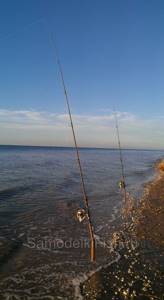
We wish that fishing turns into an unforgettable vacation with pleasant adventures!

